No, it is not the southernmost tip of Africa as is commonly thought. It is not even where the Atlantic Ocean meets the Indian Ocean, a theory that was held for a very long time but has since been disproved. But is a geographical feature of great historical significance and a name that is familiar to every school kid. It is the Cape of Good Hope - the legendary rocky headland that maritime explorers of old approached with exhilaration and trepidation in equal measure. So despite having made this trip almost two decades ago, we thought it would be a shame to give this beautifully rugged part of South Africa a miss this time.
A convenient way to cover several sights on the peninsula in one day is to join a day tour and that is what we ended up doing. The route took us along the scenic Atlantic seaboard passing the pristine beaches of Clifton and Camps bay. There was an important cycle race scheduled for the following weekend and the road was very busy with a large number of participants preparing for the race by practicing on the tough hilly sections. This made progress of our minibus very slow, but gave us plenty of opportunity to enjoy the scenery along the way.
Our first stop was Hout Bay, a quaint fishing village. We stopped at the marina, where we were given the opportunity to take boat to visit a nearby seal colony. Having recently seen thousands of fur seals at Cape Cross, Namibia, we decided to sit this one out and enjoy the scene at the local crafts market. We were also entertained by the antics of a few seals that were busy playing with their food, er fish, close to shore.
The drive continued along Chapman's Peak and here the road hugs a sheer cliff on one side and drops in to the icy Atlantic Ocean on the other. From a vantage point, you get magnificent view of the Hout Bay crescent and the surf pounding the rocks all along the coast. From the cold Atlantic waters, we crossed over to the Indian Ocean side where the average temperature of the waters can be as much as 10 C warmer. Our destination was Boulders beach, home to a thriving colony of African Penguins (previously known as Jackass Penguins because of their braying-like call).
Nestled in a sheltered cove between Simon's Town and Cape Point, the beach at Boulders offers unparalleled opportunity to view this endangered species at close range. With their population down by 90% since 1910, they are now making a comeback in recent years. Restrictions on commercial fishing led to increased supply of certain fish species that form part of the penguins' diet, and has resulted in rapid growth of the penguin colony in recent decades. From just 2 breeding pairs in 1982, there are now over 2200 breeding pairs here! There were a few penguin chicks in the colony being attended to very carefully by their parents. Several seemed to make frequent trips back into the water to ride the waves and cool off on this hot afternoon while the lazier ones just took shelter in the shade of nearby rocks.
Video : Penguins at Boulders
We then proceeded to enter Table Mountain National Park, of which Cape of Good Hope is a part. This time we had an opportunity to cover part of the distance on bicycles, an enjoyable way to experience the landscape and take in the scenery at a slow pace. The vegetation in this area is referred to as coastal fynbos, (fynbos means 'fine bush' in Afrikaans) and consists mainly of short scrubby plants including reeds, heath and the striking protea. While zebra, eland and a variety of other antelope are said to inhabit the Cape, what we saw on that day were mainly platoons of mischievous baboons. These elicited excited squeals from some of our tour companions, perhaps recent arrivals to the continent, and was quite amusing in itself. The bicycling part of the tour ended at the Park Visitor Center where we took a break for a picnic lunch.
The cliffs at the bottom of the Cape Peninsula tower more than 200 meters above the sea and consist of three clearly defined promontories - Cape of Good Hope, Cape Maclear and Cape Point.
Unfortunately when arrived at Cape of Good Hope, several tour buses bearing hundreds of tourists were already present. It was interesting to watch the gentle 'elbowing' among tourists for an opportunity to pose for photos in front of the Cape of Good Hope sign! Beyond the sign, a rocky path leads up the top of the headland for a panoramic view. Our final stop for the day was at Cape Point, the southern most point of the Cape Peninsula. Getting to the lighthouse at the top of Cape Point involves a steep climb of 20-30 minutes, but you are well rewarded with spectacular views of the ocean in three directions and of course, of the iconic Cape of Good Hope.
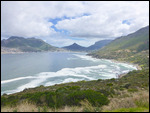

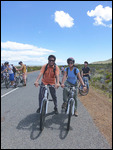
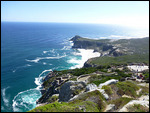


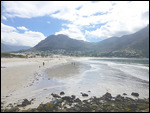
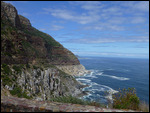
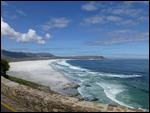
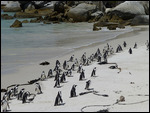
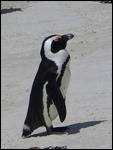
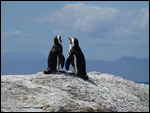
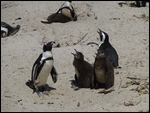
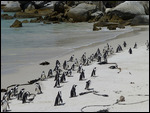
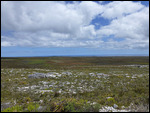
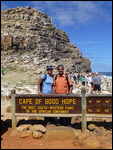
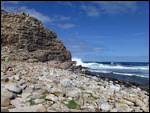
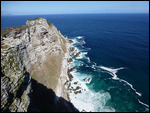
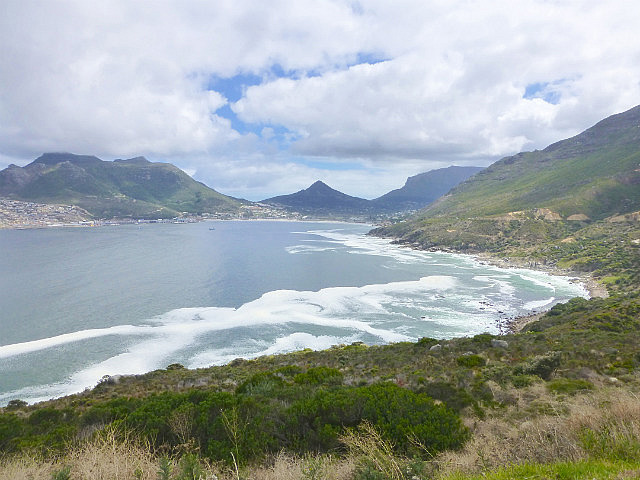
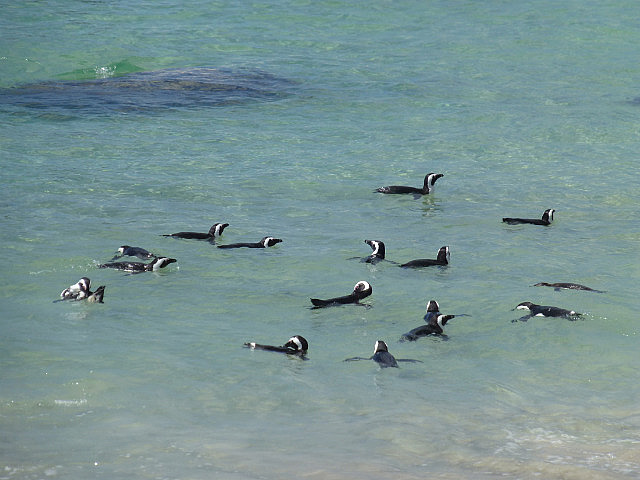
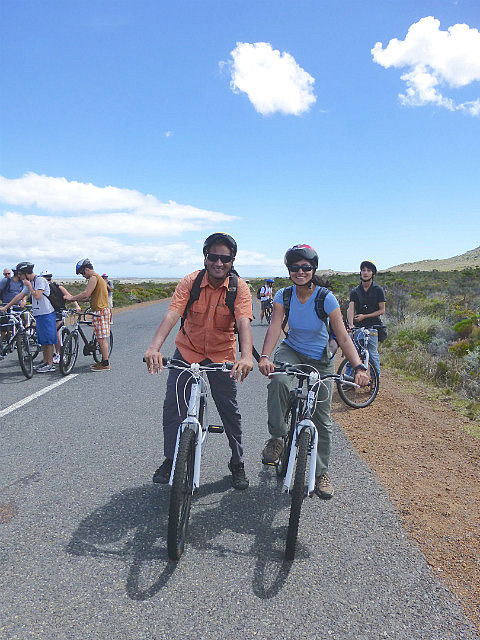
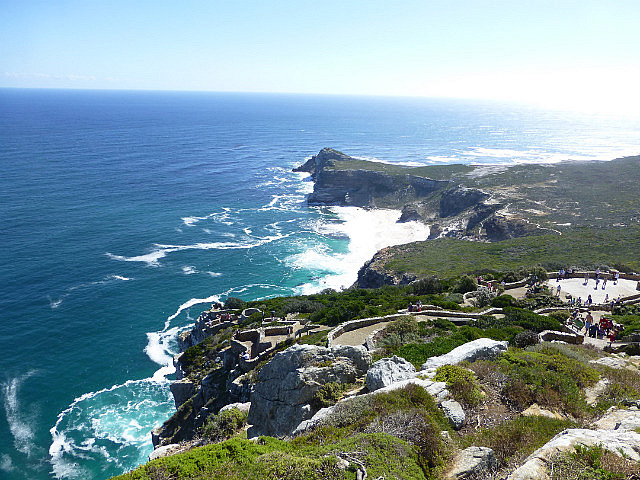
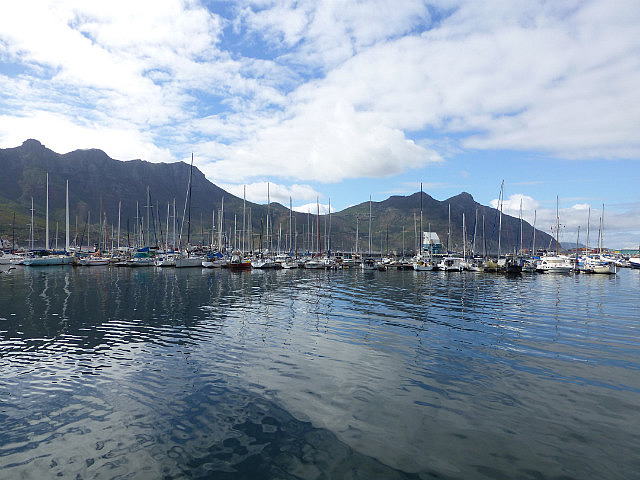

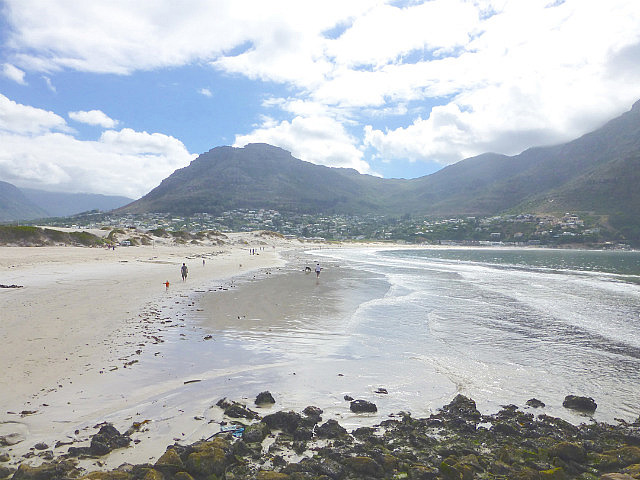
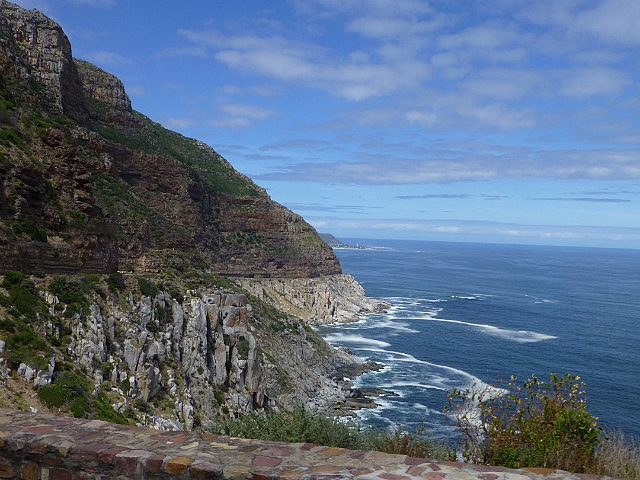
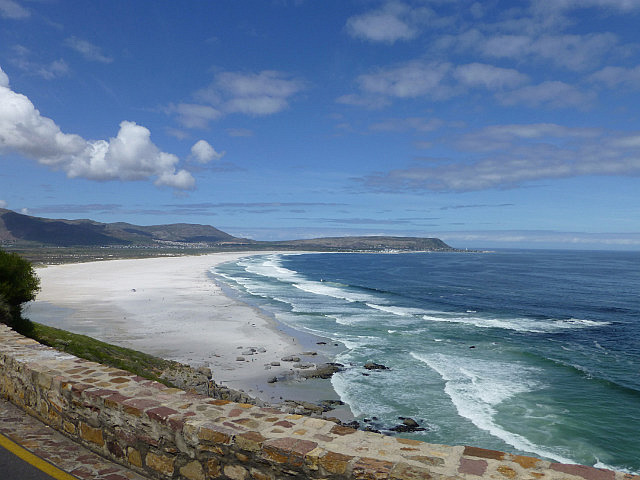

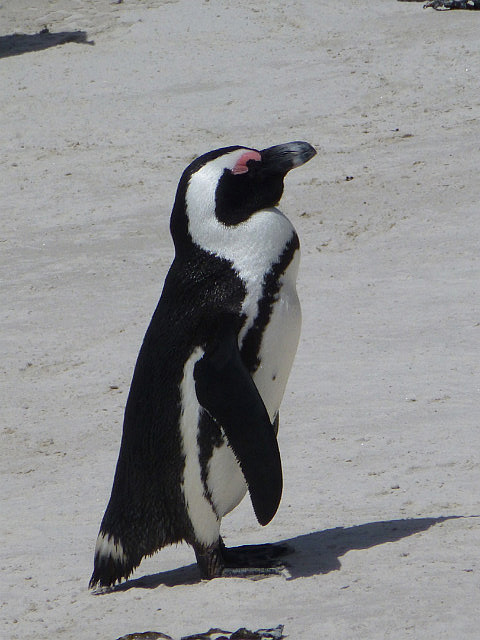
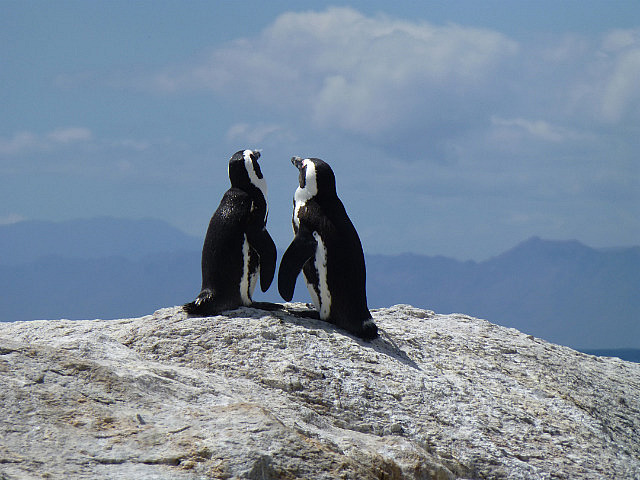
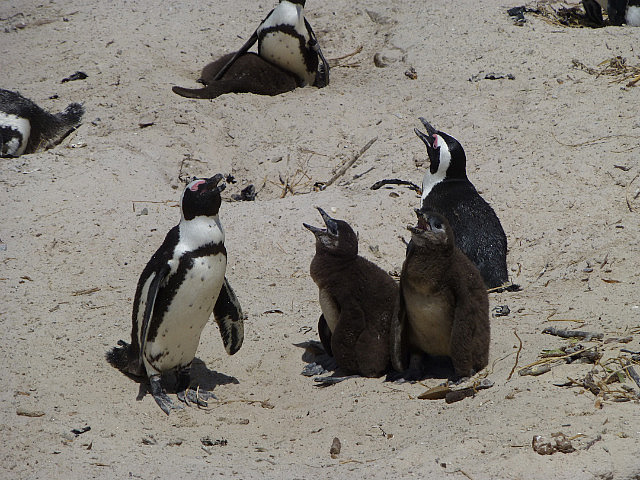



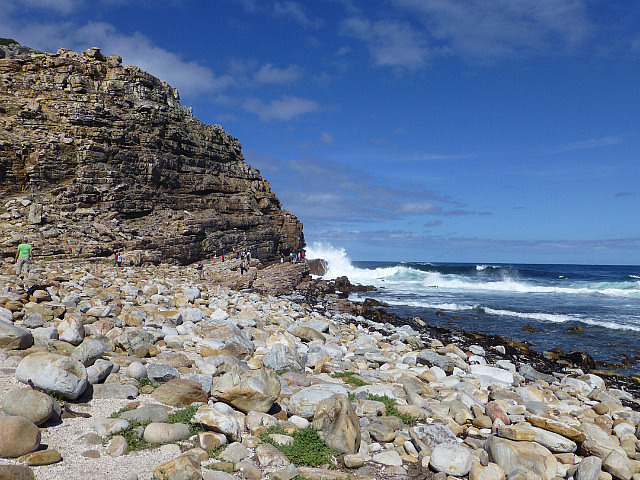

Comments